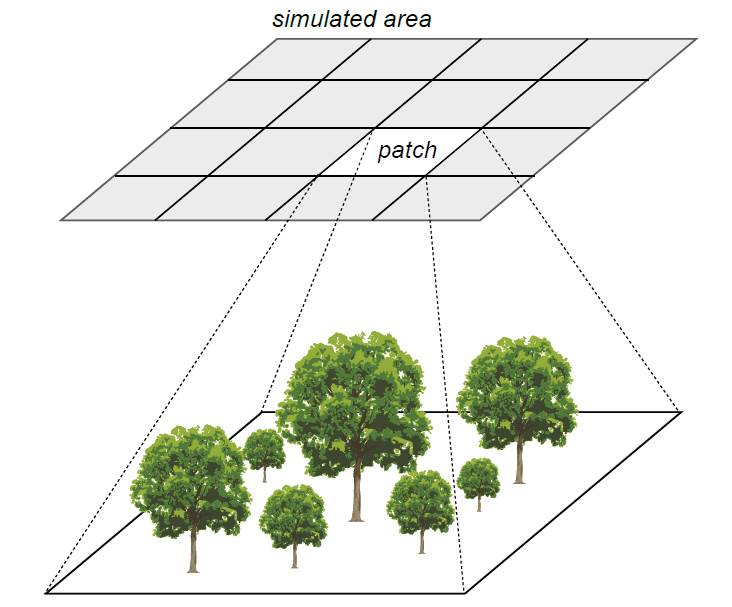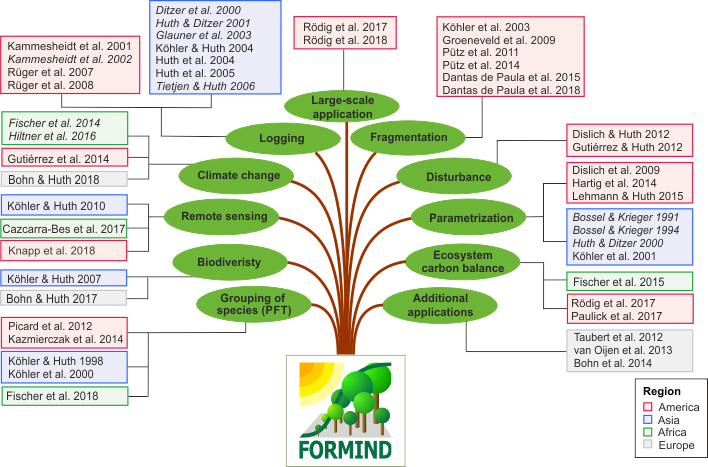Simulation of species-rich forests with the forest model FORMIND
FORMIND is an individual based, forest gap model that is used to simulate the growth of forests.

Individual-based means that growth is calculated for each tree individually. In high diversity forests, species are classified into different plant functional types in order to facilitate the parameter estimation and to reduce computing time.

Analized forest area (1 to 50 ha) is divided into 20m x 20m patches. Large trees can fall down and create gaps in the forest leading to the simulation of forest structure and dynamics. Gaps can occur also due to disturbances like fire, landslides, logging or drought. Once a gap has formed, light-demanding species can establish.
FORMIND allows to simulate forests and is based on the forest gap model FORMIX3.
Current research topics are:
- Detailed analysis of the effects of logging and fragmentation in tropical, temperate and boreal regions.
- Influence of defaunation on recruitment.
- Analysis of the carbon cycle of forests
- Grasslands
- Impact of fire events
- Linking forest model and remote sensing
- Large scale applications (e.g. simulation of the dynamics of the Amazon)
- forest factory approach (analysis of a large number of forests stands for exploring relations e.g. aboveground productivity and forest structure)

Topics and relevant literature of the Formind model. All publications can be found here.
FORMIND was developed at Helmholtz Centre for Environmental Research – UFZ Leipzig.
Key reference: Lessons learned from applying a forest gap model to understand ecosystem and carbon dynamics of complex tropical forests. Link
FORMIND at Wikipedia. Link

